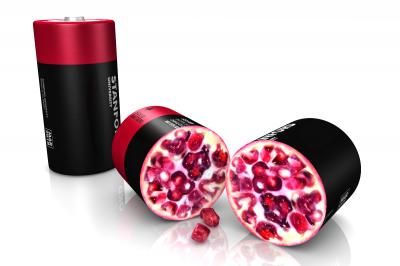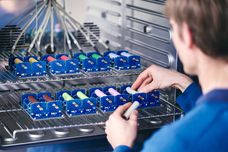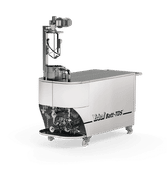Scientists home in on lithium battery safety flaws
Advertisement
Scientists at Cambridge have developed a simple, accurate way of "seeing" chemistry in action inside a lithium-ion battery.
By helping them understand how these batteries behave under different conditions the new method – which involves Nuclear Magnetic Resonance (NMR) spectroscopy – could help researchers solve the fire safety problems that have dogged the development of these batteries.
Lithium-ion battery technology has enabled the development of many electronic devices we now take for granted, such as laptop computers and mobile phones.
Lithium battery technology will also be crucial for the development of the next generation of electric cars such as the Nissan Leaf, due to be built in the UK from 2013.
But lithium batteries have one serious disadvantage: over several charge and discharge cycles, particularly if the batteries are charged quickly, minute fibres of lithium, known as dendrites, can form on the carbon anodes. These lithium fibres can cause short circuits, causing the battery to rapidly overheat and catch fire.
Writing in the journal Nature Materials, Professor Clare of the University of Cambridge says: "These dead lithium fibres have been a significant impediment to the commercialisation of new generations of higher capacity batteries that use lithium metal as the anode instead of the carbons used today."
Scientists have use theoretical models and optical and scanning electron microscopes to study dendrite formation, but finding a way of quantifying the amount of dendrites formed has proved elusive until now.
The paper describes using a new method based on NMR spectroscopy to see chemistry in action within a tiny, 1cm long, battery enclosed in the same kind of aluminium bags used to keep coffee fresh.
According to Professor Grey: "Fire safety is a major problem that must be solved before we can get to the next generation of lithium-ion batteries and before we can safely use these batteries in a wider range of transportation applications. Now that we can monitor dendrite formation inside intact batteries, we can identify when they are formed and under what conditions.
Our new method should allow researchers to identify which conditions lead to dendrite formation and to rapidly screen potential fixes to prevent the problem."
Original publication: Rangeet Bhattacharyya et al.; 'In situ NMR observation of the formation of metallic lithium microstructures in lithium batteries'; published online in Nature Materials on 16 May 2010
Most read news
Topics
Organizations
Other news from the department science
These products might interest you

Get the chemical industry in your inbox
By submitting this form you agree that LUMITOS AG will send you the newsletter(s) selected above by email. Your data will not be passed on to third parties. Your data will be stored and processed in accordance with our data protection regulations. LUMITOS may contact you by email for the purpose of advertising or market and opinion surveys. You can revoke your consent at any time without giving reasons to LUMITOS AG, Ernst-Augustin-Str. 2, 12489 Berlin, Germany or by e-mail at revoke@lumitos.com with effect for the future. In addition, each email contains a link to unsubscribe from the corresponding newsletter.
Most read news
More news from our other portals
See the theme worlds for related content
Topic World Battery Technology
The topic world Battery Technology combines relevant knowledge in a unique way. Here you will find everything about suppliers and their products, webinars, white papers, catalogs and brochures.

Topic World Battery Technology
The topic world Battery Technology combines relevant knowledge in a unique way. Here you will find everything about suppliers and their products, webinars, white papers, catalogs and brochures.
Topic World Spectroscopy
Investigation with spectroscopy gives us unique insights into the composition and structure of materials. From UV-Vis spectroscopy to infrared and Raman spectroscopy to fluorescence and atomic absorption spectroscopy, spectroscopy offers us a wide range of analytical techniques to precisely characterize substances. Immerse yourself in the fascinating world of spectroscopy!

Topic World Spectroscopy
Investigation with spectroscopy gives us unique insights into the composition and structure of materials. From UV-Vis spectroscopy to infrared and Raman spectroscopy to fluorescence and atomic absorption spectroscopy, spectroscopy offers us a wide range of analytical techniques to precisely characterize substances. Immerse yourself in the fascinating world of spectroscopy!




























































